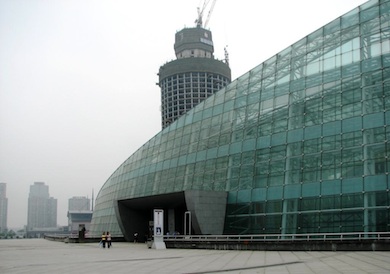In a recent research article titled ‘China’s Infrastructure Investment Boom and Local Debt Crisis’, published in the latest issue of Eurasian Geography and Economics, Professor Kai-yuan Tsui at the Chinese University of Hong Kong analyses the recent pattern of China’s infrastructure investments and the country’s serious local debt problems. He observes a close and intricate relationship between China’s land revenue-based local fiscal system, cadre evaluation system, banking system and investment in urban infrastructure and high-speed rails.
The state of this relationship suggests that without significant change in China’s institutional environment, the recent investment boom and the resultant bubble will not simply be a one-time aberration triggered by the global financial crisis; instead, these events are closely related to China’s unique institutional setting.
Chinese local officials are not immune to ramping up debt-financed infrastructure investments, given the opportunity. And the current state-controlled banking system is likely to be on standby to accommodate their wishes. As a result, China’s economy is caught in a chronic cycle of sporadic surges in investment, financed at the first sign of easy credit, massive land requisitions, real-estate booms, piling up of local debt and ultimately bailouts (or, euphemistically, recapitalisation), as banks and local governments assume too much debt. This systemic, cyclical and crisis-driven investment approach to development makes China’s long-needed economic shift toward increased reliance on domestic consumption nearly impossible.
The latest episode analysed by Tsui is an important reminder of the country’s periodic waves of investment mania and the ensuing retrenchments over the last 60 years, with each wave inflicting vast amounts of damage. There would be at least one ‘great leap forward’ in almost every decade.
The incentive system that fosters such behaviour has hardly changed in nature either, as the cadre evaluation system remains very much top-down and based on short-term indicators, similar to the pre-1980s era. As such, the local bureaucracy is faced with almost no pressure from below, and thus has to worry little about public accountability. And while China’s post-1990 banking system is not the same as in the past, as Tsui duly points out, it is at best only ‘half reformed’. In this latest chapter, the half-marketised banking sector has also opened its doors to new practices unheard of in China before, namely, ‘incentivised risk taking’ and ‘leveraged platforms’, with greater potential to wreak havoc. If those tricks of finance sound reckless and familiar to observers of the 2008–09 global financial crisis, they probably are.
On a broader level, Tsui also raises serious questions about the viability of the China model — the so-called ‘Beijing Consensus’ — and its transferability as a genuine alternative for other developing nations. These issues highlight the systemic nature of China’s current economic problems, a fact that anyone who is serious about deciphering China’s economy must come to recognise.
Kam Wing Chan is Professor of Geography at the University of Washington. He is also a co-editor of Eurasian Geography and Economics. An earlier version of this article appeared in The Seattle Times on 6 December 2011.


I have not read Tsui’s article, but did Tsui test whether there are any differences between the ‘Great Leap Forward’ campaign in the late 1950s and any so called later great leap forwards? Has Tsui really concluded that there is no difference between the latter and the former, so the Chinese economic size would be still lowly ranked in the world, given that in the late 1950s the slogan was to overtake Britain in certain years and catch up with the US in certain years? Or has Tsui concluded or implied that China will enter into a similar period as it did following the failures of the 1950s ‘Great Leap Forward’ campaign and take quite a number of years to recover to its pre ‘Great Leap Forward’ level?
How does Dr. Chan’s field of study provides him with special insight in commenting on the overall economic situation in China? The field of geography is rather distant governmental policy on economics. How does Dr. Chan justify his speciality in commenting on such issues?
If this forum does not censor me yet again (3rd time), I’d sincerely like an answer for the above question.